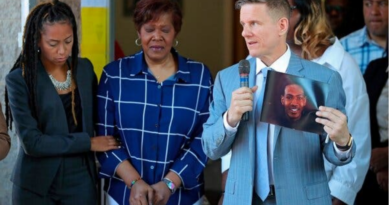Discrimination against Minority Rights in the USA

Daniel Frum In order to address a number of issues affecting minorities and underprivileged groups, the U.S. has been forced to ask these kinds of questions. According to him, Kennedy and King contended that some types of discrimination are an insult to the idea of a free, democratic society. What stops a society from legitimizing other prejudices if it is permissible to discriminate against one group of people? [3-5]
“No State shall adopt or enforce any law which shall abridge the rights or immunities” following the Civil War was the most significant part of the 14th Amendment. Reconstruction made an effort to guarantee that people who had been freed as slaves during the war had full citizenship rights [6, 7].
Justices have ruled that de facto segregation is not prohibited by the Constitution. A majority has urged trial courts to withdraw desegregation decrees whenever an educational system that is racially segregated has become more integrated. According to the Court, the “equal protection” clause of the 14th Amendment only applies to acts that deliberately discriminate against racial minorities [8, 9].
According to David Frum, Native Americans have encountered the same difficulties assimilating into American society as African Americans have. He contends that Indians were granted citizenship and the right to vote once civil rights groups were established. He said that Congress and the courts frequently backed Western expansion at the expense of Indian property rights [10, 11].
Critics claim that affirmative action measures constitute “reverse discrimination,” which is illegal. They received criticism for raising racial tensions and defying the notion of a “color-blind” Constitution. The Supreme Court dealt with a quota system in which 16 places at a state medical school were set aside for members of underrepresented groups in its first big decision [12, 13].
The battle to remove prejudice against minorities in the United States has mostly been fought in legal proceedings, Congress, and state legislatures. She cites rule of law and individual equality as the two reasons why efforts have been successful. The belief in individual equality compels Americans to confront their prejudices, she argues, even if they dislike certain groups. The nation is dedicated to eliminating all traces of its history of prejudice against certain groups, although Ghitis notes that this commitment has not yet been fully realized [14-16].
According to Kennedy and King, discrimination in general is an insult to the idea of a free society. If prejudice against one group of people is permitted, what stops a community from legalizing further biases? Justices have ruled that de facto segregation is not prohibited by the Constitution. Affirmative action laws are said to violate the idea of a “color-blind” Constitution and worsen racial tensions. Despite not having been fully achieved, the nation is dedicated to eliminating all traces of its prior discrimination against specific groups.
References
[1] R. K. Fullinwider, The Reverse Discrimination Controversy. A Moral and Legal Analysis. ERIC, 1980.
[2] C. Backhouse, Colour-coded: A legal history of racism in Canada, 1900-1950. University of Toronto Press, 1999.
[3] J. T. Patterson, Restless Giant: The United States from Watergate to Bush v. Gore. Oxford University Press, 2005.
[4] I. McKay, “The liberal order framework: A prospectus for a reconnaissance of Canadian history,” Canadian Historical Review, vol. 81, no. 4, pp. 616-678, 2000.
[5] R. L. Payton and M. P. Moody, Understanding philanthropy: Its meaning and mission. Indiana University Press, 2008.
[6] E. Foner, “The Supreme Court and the History of Reconstruction-and Vice-Versa,” Colum. L. Rev., vol. 112, p. 1585, 2012.
[7] J. Saville, The Work of Reconstruction: From Slave to Wage Laborer in South Carolina 1860-1870. Cambridge University Press, 1994.
[8] J. S. Wright, “Public School Desegregation: Legal Remedies for De Facto Segregation,” NYUL Rev., vol. 40, p. 285, 1965.
[9] P. Gewirtz, “Remedies and resistance,” Yale LJ, vol. 92, p. 585, 1982.
[10] E. Love, “Confronting Islamophobia in the United States: framing civil rights activism among Middle Eastern Americans,” Patterns of Prejudice, vol. 43, no. 3-4, pp. 401-425, 2009.
[11] B. E. Johansen, “Education-The Nightmare and the Dream: A Shared National Tragedy, A Shared National Disgrace,” Native Americas, vol. 17, no. 42, p. 10, 2000.
[12] G. P. Wasson, “Affirmative Action: Equality or Reverse Discrimination?,” 2004.
[13] T. J. Yosso, “Whose culture has capital?: A critical race theory discussion of community cultural wealth,” in Critical race theory in education: Routledge, 2016, pp. 113-136.
[14] J. V. Switzer, Disabled rights: American disability policy and the fight for equality. Georgetown University Press, 2003.
[15] D. A. Bell Jr, “Racial remediation: An historical perspective on current conditions,” Notre Dame Law., vol. 52, p. 5, 1976.
[16] G. Lipsitz, The possessive investment in whiteness: How white people profit from identity politics. Temple University Press, 2006.


